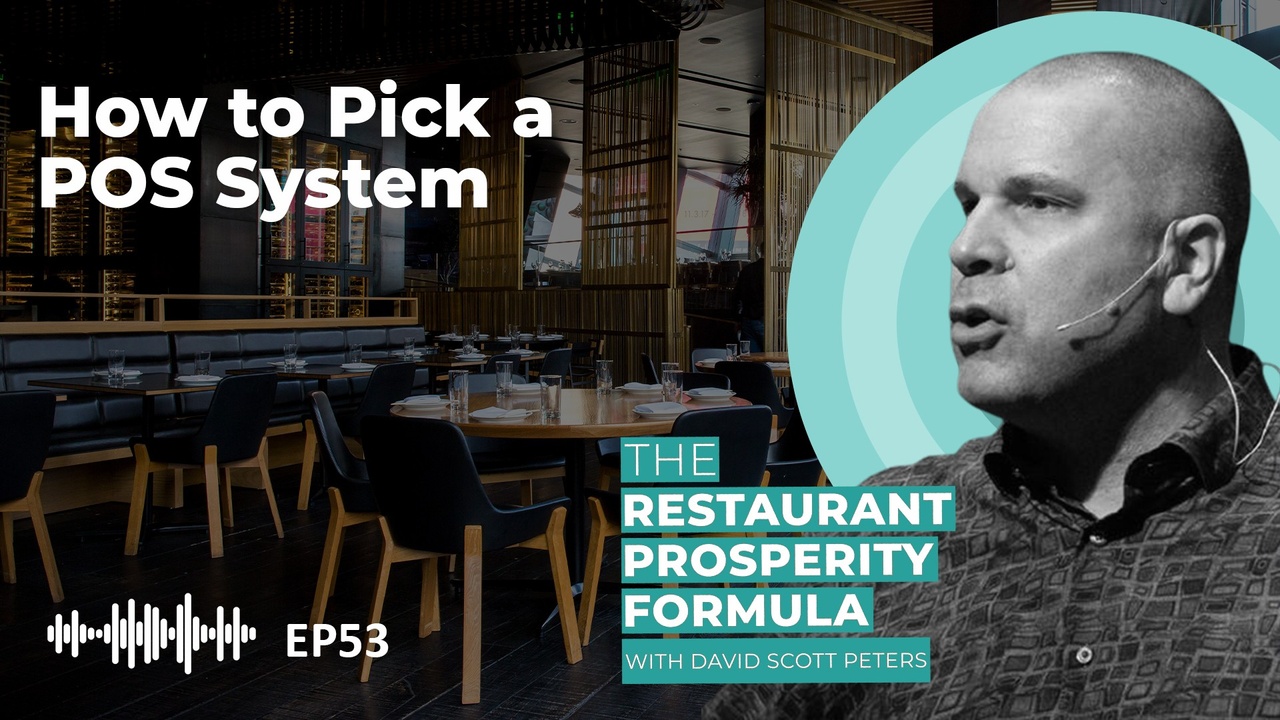Which POS System Should I Use in My Restaurant?

There is one question I am asked routinely by restaurant owners: Which POS system should I use in my restaurant? It’s an important question because your restaurant POS system is more than an expensive cash register. It’s full of data and reports you can use in your daily restaurant management activities. The problem is there are so many options on the market that it tends to get very overwhelming. Listen to this episode of my podcast, The Restaurant Prosperity Formula, to learn what a good POS system should do for you, what to look for in a POS system company and what to consider when it comes to cost.
This episode is meant to help narrow the options down and keep you from being overwhelmed. Finally, I offer my favorites and let you know the favorites among the members of my restaurant coaching group.
As a preview of what I discuss, here are some features you should think about when looking at a POS system:
- Will it take cash, credit card and gift card transactions? This seems to be a no brainer, because the whole intention of a POS system is sales transactions. But you would be surprised at how many low-end options don’t have a gift card system.
- Does it have a timekeeping module? This is extremely important because it’s not only for reporting hours for payroll, but when it connects to your sales you can easily see when you should start cutting labor hours as you see what your running labor cost is and how sales per half hour have been dropping.
- Does it have the following reports:
- DSR (daily sales report). The daily sales report, also known as an end-of-day report or sales report, is important to make sure you know what your expected cash collected is for the day to ensure you get every penny expected to the bank.
- Comp and discount report. This report is for tracking any promotions and discounts you give each day. By tracking this you can quickly see if you have service or food preparation issues that need to be addressed or a manager who is simply giving away the shop.
- Transfer report. A transfer report allows you to see any items that have been transferred from one ticket to another or completely to another employee. This report is critical to catching employees who are stealing by moving one item off one ticket to another when the customer pays cash for the bill, ultimately allowing that employee to pocket the cash.
- Void report. This report lets you see if you have training issues because items are being voided often. It is also a good tool to identify and prevent managers who are stealing by voiding cash transactions.
- No-sale report. This report shows when any employee who manages a cash drawer rings up a transaction, hits the no-sale button on the POS, which immediately voids the whole transaction and opens the cash drawer. This report is critical for catching employees who are stealing when a customer pays with cash.
- Item-by-Item sales mix report (also known as a product mix report). When it comes to making real change in your business, this report is king! When you combine the counts of each item purchased by your customers with current, up to date, recipe costing cards, you will immediately know your ideal (or theoretical) food cost is to measure how your kitchen is performing. This allows you to easily engineer menu changes that will change your bottom line.
- Labor summary report, which is a tally of regular hours/pay and overtime hours/pay for each position worked in your restaurant. Using these numbers allows you to schedule on budget the next week.
- Timekeeping report, which is imperative to keeping proper records required by state and federal government regulations and more importantly, to submit correct payroll numbers.
- 8027 tip report. This report is a great tool to easily keep track of cash/credit card sales vs tips collected and reported and fill out the Federal 8027 Tip Report Form each year.
- The number one thing you must research before purchasing a POS system is what kind of support do they offer? Because it’s not if, it’s a matter of when your POS will go down in the middle of the rush on a busy Friday night.
- Next thing to consider is the cost. What have you budgeted for this purchase? The traditional higher priced POS companies charge a premium for their software, hardware and ongoing support. Many POS systems in the next level down are equally as good as the top tier companies, they’re just less expensive. Then there are the entry level tier of POS that for the most part are not worth even looking at to run a restaurant because they don’t have the reporting capabilities outlined above.
I believe for the most part, the top and mid-priced POS systems do almost the same things. One may have features others don’t have that you like or are looking for, but there really isn’t a bad choice. Unless of course you are talking to someone who HATES one of them. Let me remind you, I can find you people who love each one of these and people who hate them equally, if not more. Listen to the whole podcast episode for a list of POS systems that I think are worth it.
Ultimately, the short answer to the question, “which POS should I buy?” is the one that has the features you want, fits with your budget and has great support and service.
Click the podcast player above to listen in, or you can watch the video on YouTube, click here to download the latest episode.




